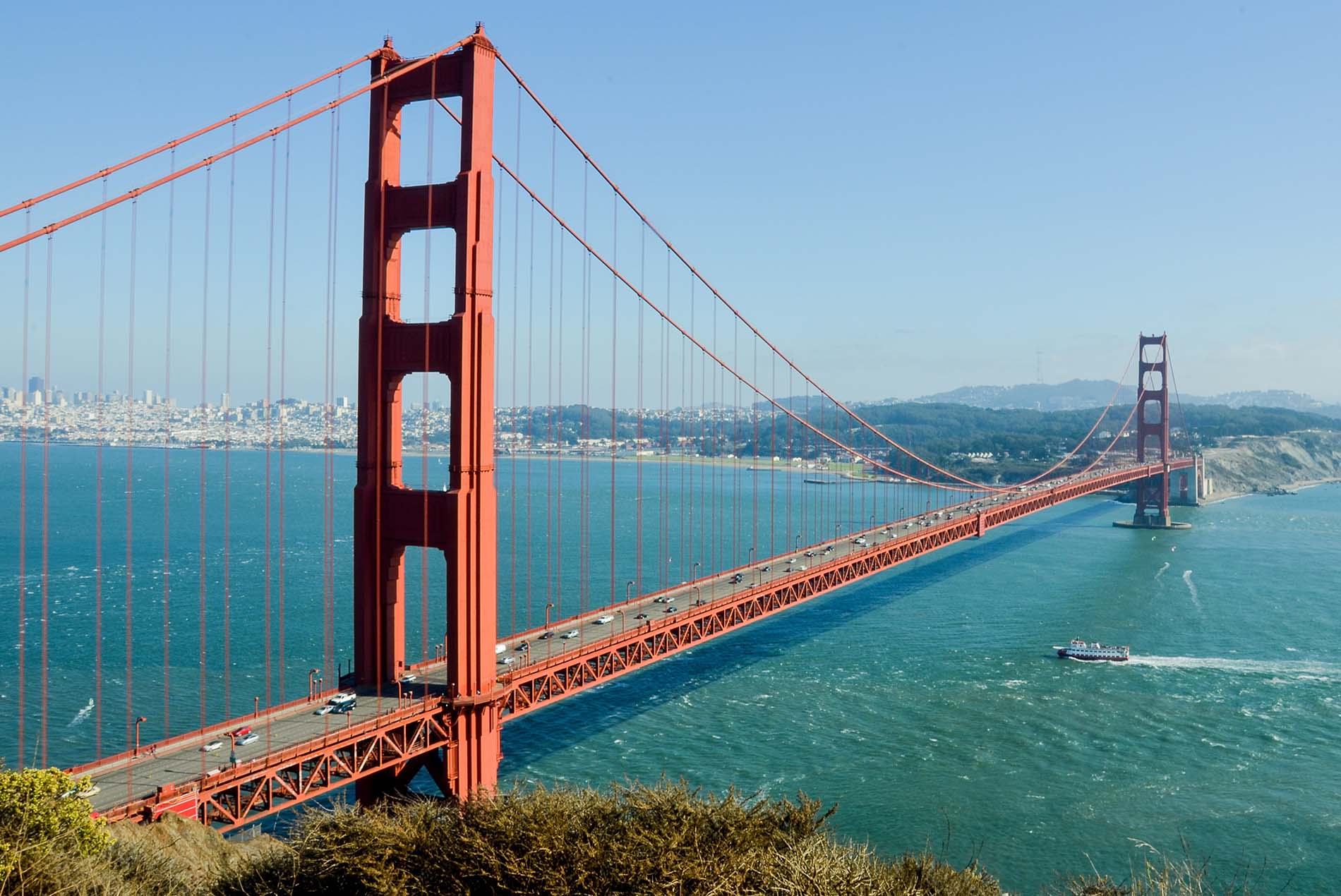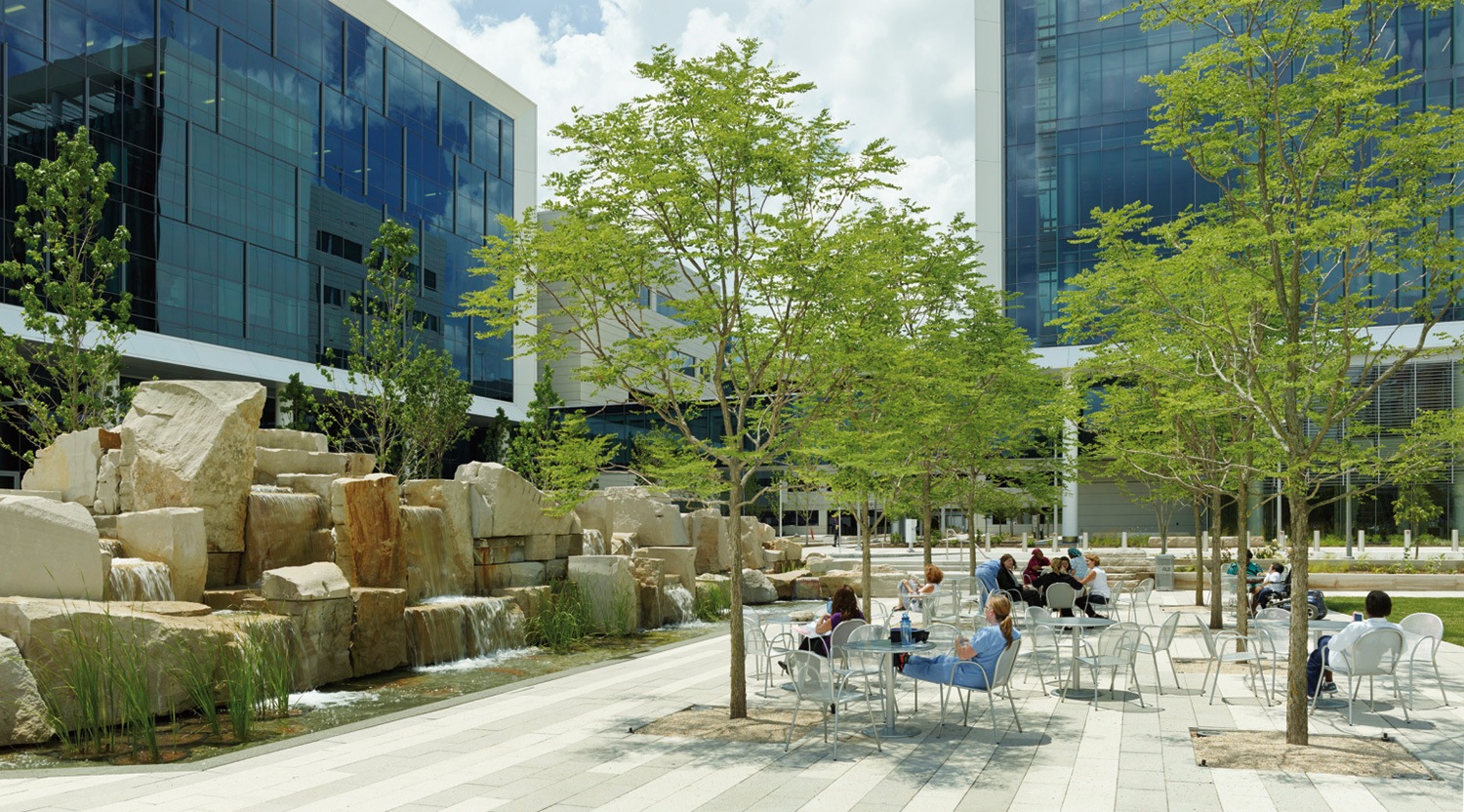Chief Medical Officer Andrew Ibrahim and Senior Healthcare Consultant Kathleen Schwarz draw on their experiences on the frontlines of COVID-19 to explore how to improve conditions for hospital staff, while Design Principal Peter Ruggiero makes a case for integrating design excellence into President Biden’s infrastructure plan.
Excerpted from Ibrahim’s and Schwarz’s Fast Company column:
In our dual roles in medicine and healthcare planning and design, we have been sharing our pandemic experiences working in hospital ICUs with our HOK colleagues. Many have asked us how they can improve the experience for frontline hospital personnel. The answers are complicated.
Architects and designers can help by taking a holistic approach to designing restorative healthcare spaces. Every part of the hospital building should be a manifestation of the organization’s broader goals of taking care of its people.
Inside the hospital, designers can prioritize daylight, electric lighting strategies that support circadian rhythm, views to the outside, natural ventilation, nontoxic materials, indoor greenery and artwork. They also can give staff easy access to uplifting outdoor spaces for quick breaks. Whether it’s providing views of a garden, a body of water, a city skyline or the sunset, it’s vital for staff to feel connected to what’s going on beyond the hospital walls.
As part of a range of systemic solutions focused on the wellness of healthcare workers, architects also can help make the case for and design specific places of respite for caregivers. Michigan Medicine recently opened three recharge rooms to ease staff stress at its Ann Arbor medical center. The rooms include dimmed lighting, relaxing music, greenery, socially distanced but comfortable seating and tranquil imagery.
It’s true that space is tight in most hospitals. But if we look hard enough, we can find underutilized space—whether it’s an empty office or a patient education room—that can be repurposed as respite areas for staff. When we have the luxury of designing a new facility, we need to build in plenty of flexible spaces that can change to accommodate different uses over time.
Excerpted from Ruggiero’s Fast Company column:

The Biden-Harris Build Back Better plan calls for a trillion-dollar investment to modernize the country’s infrastructure. This includes our transit systems, highways, bridges, and ports. With this undertaking will come a rare opportunity to transform our most-trafficked places.
Along with sustainability and equity, I suggest we approach these infrastructure projects—this new New Deal—through an additional lens: design excellence.
We have a civic obligation to make these new public buildings, spaces, systems, and networks both functional and beautiful. And of course beauty runs more than skin deep. Beautiful architecture is thoughtful and based on powerful ideas. It inspires. It connects a building or structure with its neighbors. It encourages healthier habits and enriches people’s lives. For these infrastructure projects, beautiful design will wrap substance and mass around our society’s hopes and values.
Designers inevitably will bring more expansive thinking to ensure that, in addition to functioning as planned and looking good, infrastructure catalyzes related development and checks boxes related to sustainability, resilience, equity, and economic success.
With its expansive windows and ample daylight, striking art installations and pair of 450-foot-long steel truss pedestrian skybridges spanning active aircraft taxi lanes, LaGuardia Airport’s New Terminal B is another modern example of investing in infrastructure design. The project also was financed by a public-private partnership between the Port Authority of New York and New Jersey and LaGuardia Gateway Partners, a private entity that is redeveloping and operating the terminal. The $5.1 billion terminal redevelopment is a model for how the private sector can financially support significant infrastructure projects while advancing ambitious design solutions.
Golden Gate Bridge image via pexels.com by Pixabay.
